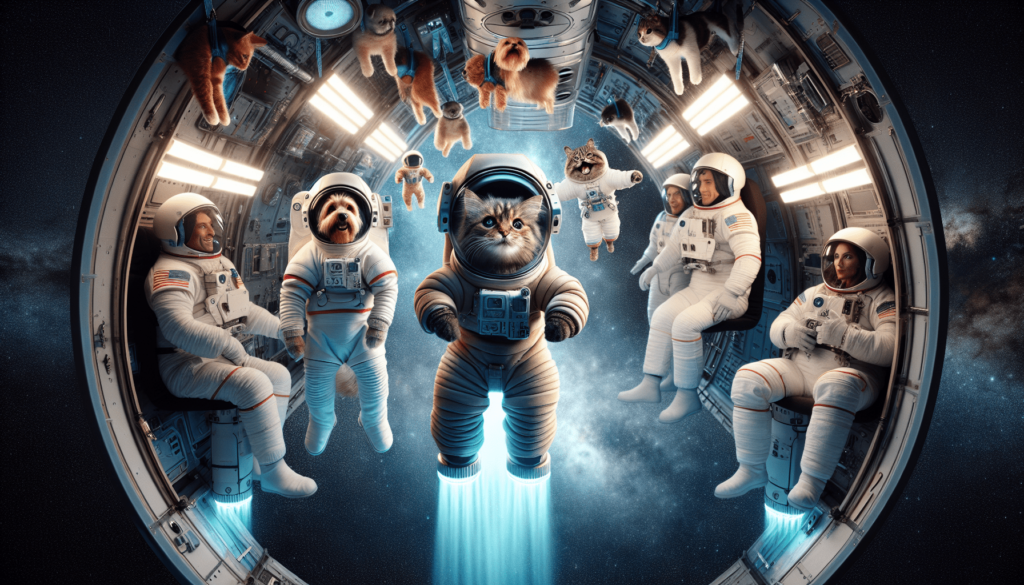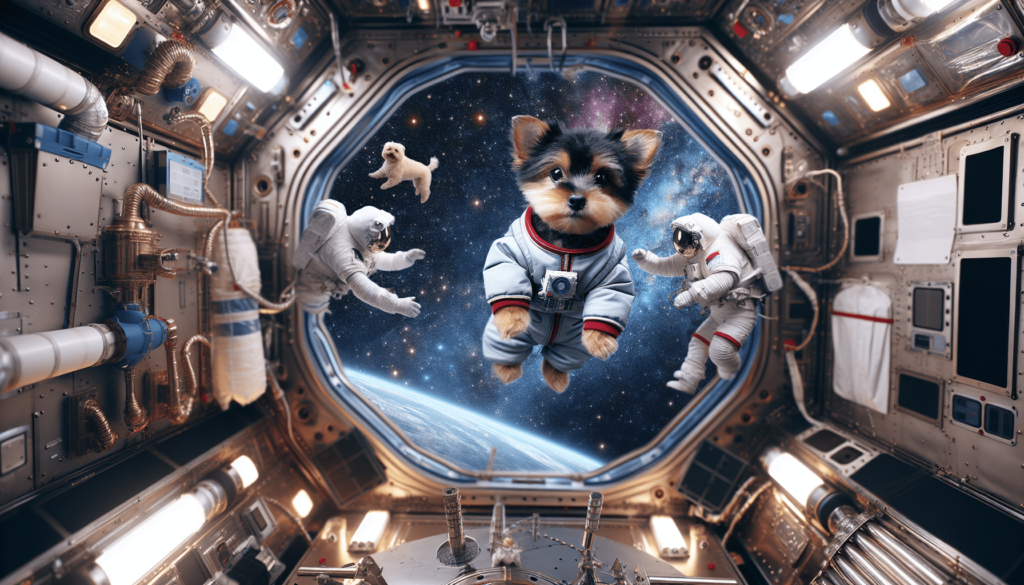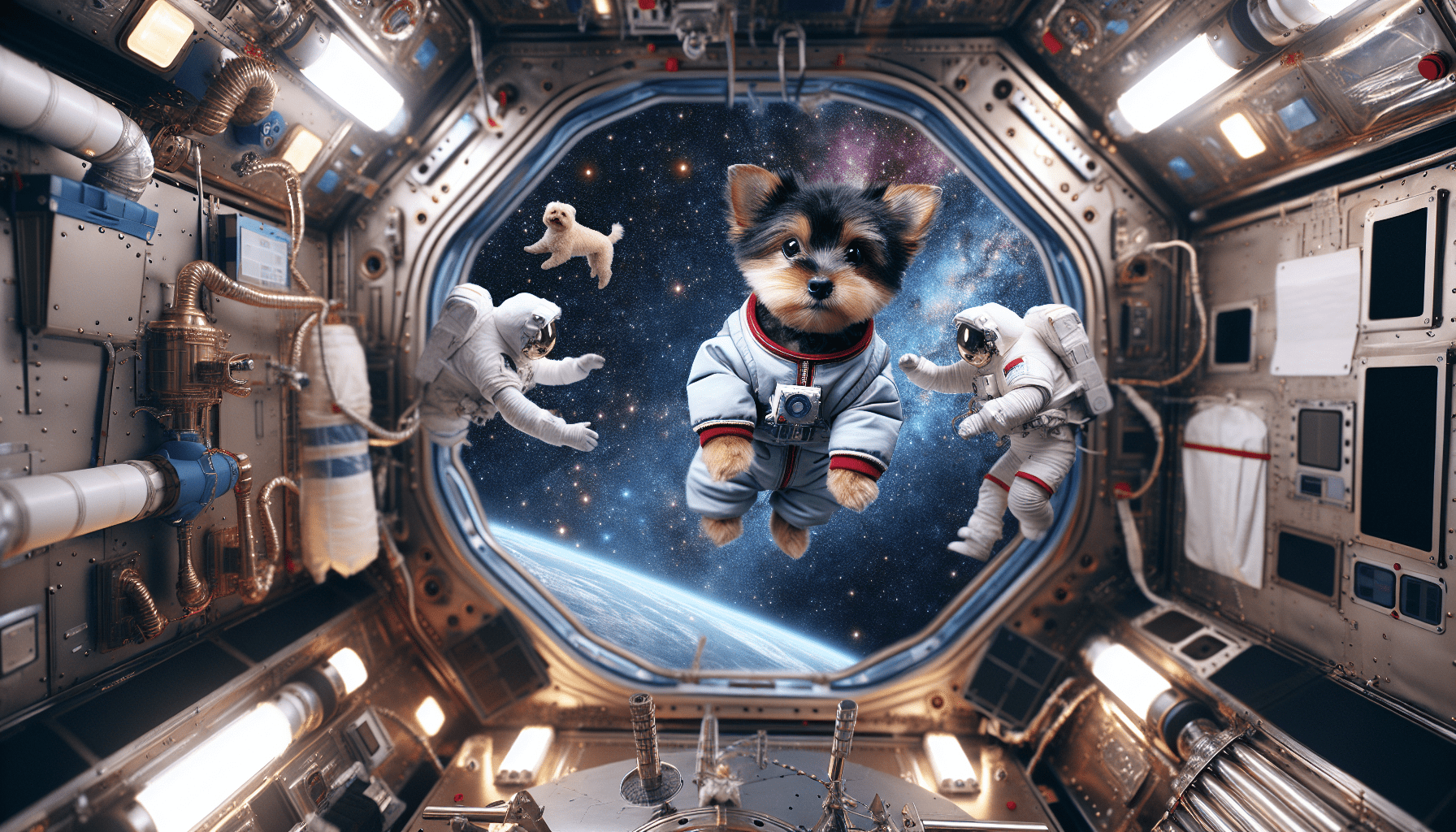Do Pets Belong in Space?
As a pet owner, you may have wondered about the feasibility of bringing your furry friend along on a space mission. While the idea of having pets in space may seem whimsical, there is actually a long history of animals being sent into space. Let’s take a look at how pets have played a role in space exploration throughout the years.
The First Animals in Space
Believe it or not, the first animals to travel to space were fruit flies. In 1947, a group of fruit flies was launched aboard a V-2 rocket to study radiation exposure at high altitudes. Since then, many different animals, including monkeys, dogs, and even turtles, have been sent into space to help advance our understanding of how living organisms react to the challenges of space travel.
Laika – The First Animal in Orbit
Perhaps the most famous space-faring animal is Laika, a dog sent into orbit by the Soviet Union in 1957. Laika made history as the first living creature to orbit the Earth, paving the way for human spaceflight. Unfortunately, Laika’s mission was one-way, as there was no technology in place at the time to bring her back to Earth safely.

Animals in Space Research
The role of animals in space research has been crucial in understanding how living organisms react to the harsh conditions of space. From studying the effects of weightlessness on the body to testing life support systems, animals have played a vital role in advancing our knowledge of space travel. This research has not only benefited humans in space but has also contributed to our understanding of how life adapts to extreme environments.
The Ethics of Sending Pets to Space
When considering the idea of animals in space, ethical concerns naturally arise. It is important to address the welfare of these animals and ensure that their inclusion in space missions is done with their best interests in mind.
Ethical Considerations
Sending animals into space raises questions about their safety, well-being, and ability to adapt to the challenges of space travel. It is essential to carefully consider the ethical implications of exposing animals to the risks associated with space exploration.

Animal Welfare Guidelines
To address these concerns, strict guidelines and protocols have been put in place to ensure the well-being of animals involved in space research. These guidelines include providing proper care, monitoring health conditions, and minimizing stress during the mission.
Famous Space Pets
Throughout the history of space exploration, there have been a number of famous pets that have captured the public’s imagination. From monkeys to dogs, these space-faring animals have become icons of early space missions.
Belka and Strelka – Pioneers of Space Travel
In 1960, two dogs named Belka and Strelka became the first animals to survive a trip to space and return safely to Earth. Their successful mission demonstrated that living organisms could endure the challenges of spaceflight and paved the way for future human missions.
Ham – The First Chimpanzee in Space
In 1961, a chimpanzee named Ham was sent into space by NASA to test the effects of space travel on living organisms. Ham’s mission was a success, and he became a celebrity overnight, demonstrating that primates could adapt to the conditions of space just like humans.
Pets in Modern Space Exploration
As technology has advanced, the role of pets in space exploration has evolved. While animals are no longer sent on space missions as frequently as they once were, their contributions to scientific research have not been forgotten.
Scientific Advancements
The data collected from animal experiments in space has led to significant scientific advancements in areas such as medicine, biology, and space technology. These contributions have helped pave the way for future human missions to Mars and beyond.
Alternative Methods
With the development of advanced robotics and AI technology, there are now alternative methods for conducting experiments in space without the need to send animals. These technological advancements have allowed scientists to gather data more efficiently while minimizing the ethical concerns associated with using animals in space research.
Future of Pets in Space Exploration
Looking ahead, the future of pets in space exploration remains uncertain. While the use of animals in space research has provided valuable insights into the effects of space travel on living organisms, ethical considerations continue to be a factor in deciding their role in future missions.
Space Tourism
As space tourism becomes a reality, the question of bringing pets along for the journey may become a possibility. With dedicated pet-friendly spaceships and advanced life support systems, it is not inconceivable that pets may one day accompany their owners on trips to space.
Ethical Guidelines
To ensure the welfare of animals in space, it is essential to establish clear ethical guidelines and protocols for their inclusion in future missions. These guidelines should prioritize the safety and well-being of pets in space while also allowing for valuable scientific research to continue.
Conclusion
In conclusion, the history of pets in space exploration is a fascinating journey that has provided valuable insights into the challenges of space travel. From the first animals sent into orbit to the modern advancements in space technology, pets have played a vital role in shaping our understanding of the cosmos. As we look towards the future of space exploration, the ethical considerations surrounding animals in space will continue to be an important aspect of mission planning. By balancing scientific progress with the welfare of animals, we can ensure that the legacy of space-faring pets is one of discovery, compassion, and innovation.

